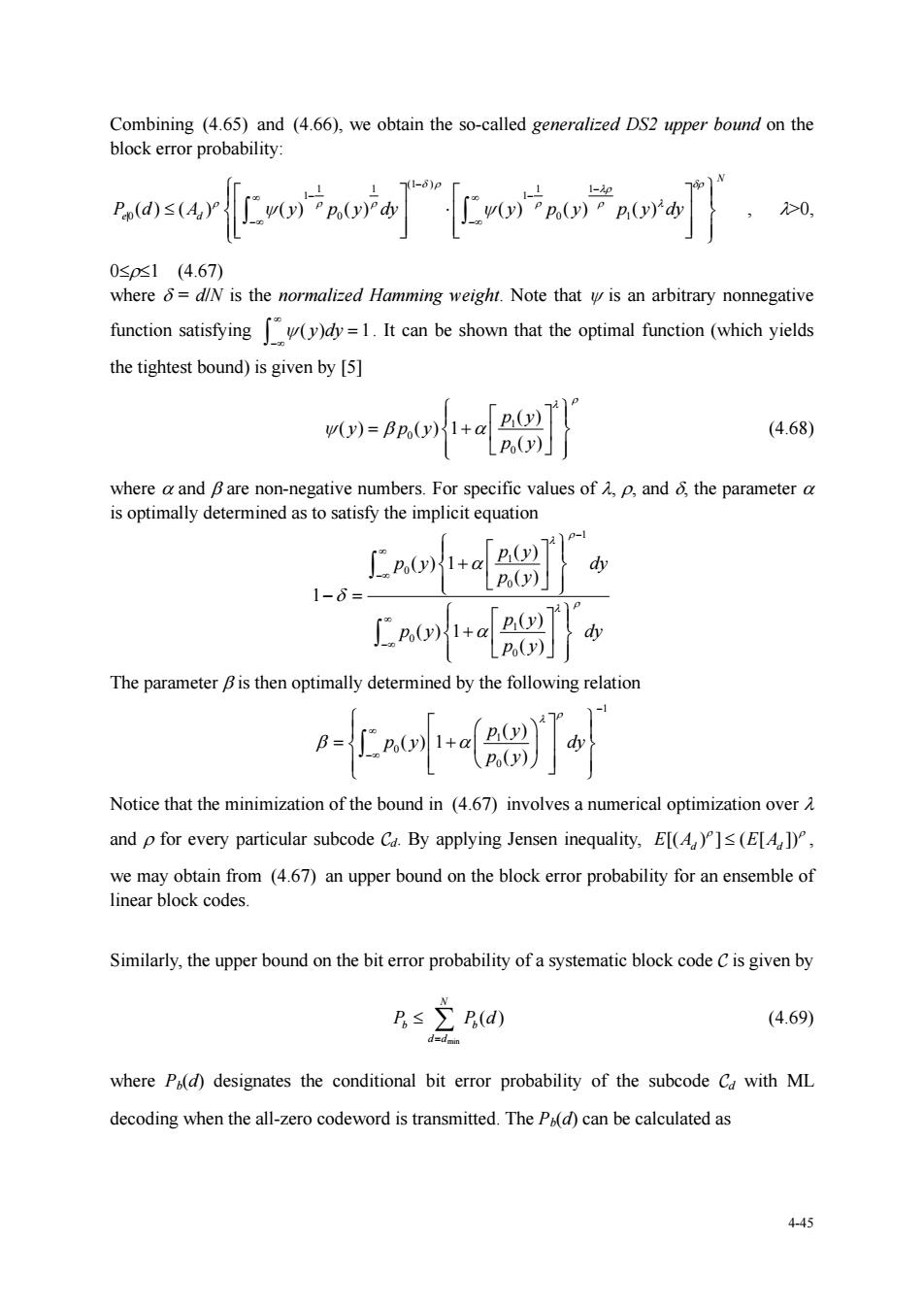正在加载图片...

Combining (4.65)and (4.66),we obtain the so-called generalized DS2 upper bound on the block error probability: P(d)s(A) vypOY& ,0, 0≤0×1467 wheredIN is the normalized Hamming weight.Note that w is an arbitrary nonnegative function satisfying1.It can be shown that the optimal function (which yields the tightest bound)is given by [5] - (4.68) where a and Bare non-negative numbers.For specific values of A p,and the parameter a is optimally determined as to satisfy the implicit equation )1+a po(y) dy 1-6 [po(y)1+a LP() The parameterBis then optimally determined by the following relation P) Notice that the minimization of the bound in (4.67)involves a numerical optimization over and p for every particular subcode C.By applying Jensen inequality,E[(A)](E[A) we may obtain from (4.67)an upper bound on the block error probability for an ensemble of linear block codes. Similarly,the upper bound on the bit error probability of a systematic block code Cis given by Rs立B(d (4.69) where Pd)designates the conditional bit error probability of the subcode Ca with ML decoding when the all-zero codeword is transmitted.The P(d)can be calculated as 445 4-45 Combining (4.65) and (4.66), we obtain the so-called generalized DS2 upper bound on the block error probability: (1 ) 1 1 11 1 1 |0 0 0 1 () ( ) () () () () () N P d A y p y dy y p y p y dy e d , >0, 01 (4.67) where = d/N is the normalized Hamming weight. Note that is an arbitrary nonnegative function satisfying () 1 y dy . It can be shown that the optimal function (which yields the tightest bound) is given by [5] 1 0 0 ( ) () ()1 ( ) p y y py p y (4.68) where and are non-negative numbers. For specific values of , , and , the parameter is optimally determined as to satisfy the implicit equation 1 1 0 0 1 0 0 ( ) ()1 ( ) 1 ( ) ()1 ( ) p y p y dy p y p y p y dy p y The parameter is then optimally determined by the following relation 1 1 0 0 ( ) ( )1 ( ) p y p y dy p y Notice that the minimization of the bound in (4.67) involves a numerical optimization over and for every particular subcode d. By applying Jensen inequality, [( ) ] ( [ ]) E A EA d d , we may obtain from (4.67) an upper bound on the block error probability for an ensemble of linear block codes. Similarly, the upper bound on the bit error probability of a systematic block code is given by min ( ) N b b d d P Pd (4.69) where Pb(d) designates the conditional bit error probability of the subcode d with ML decoding when the all-zero codeword is transmitted. The Pb(d) can be calculated as